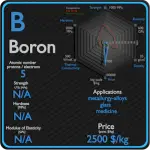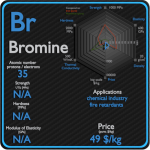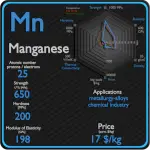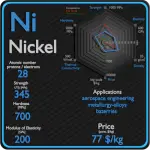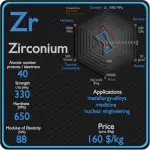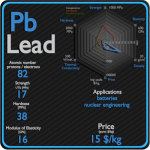This article contains comparison of key thermal and atomic properties of carbon and iron, two comparable chemical elements from the periodic table. It also contains basic descriptions and applications of both elements. Carbon vs Iron.

Carbon and Iron – About Elements
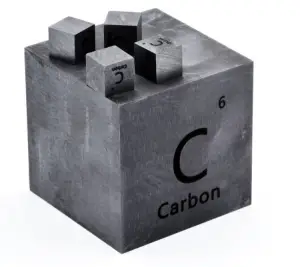
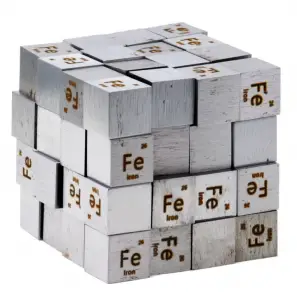
Source: www.luciteria.com
Carbon and Iron – Applications
Carbon
The major economic use of carbon other than food and wood is in the form of hydrocarbons, most notably the fossil fuel methane gas and crude oil (petroleum). Graphite and diamonds are two important allotropes of carbon that have wide applications. The uses of carbon and its compounds are extremely varied. It can form alloys with iron, of which the most common is carbon steel. Carbon is a non-metallic element, which is an important alloying element in all ferrous metal based materials. Carbon is always present in metallic alloys, i.e. in all grades of stainless steel and heat resistant alloys. Carbon is a very strong austenitizer and increases the strength of steel. In fact, it is the principal hardening element and is essential to the formation of cementite, Fe3C, pearlite, spheroidite, and iron-carbon martensite. Adding a small amount of non-metallic carbon to iron trades its great ductility for the greater strength. Graphite is combined with clays to form the ‘lead’ used in pencils used for writing and drawing. It is also used as a lubricant and a pigment, as a molding material in glass manufacture, in electrodes for dry batteries and in electroplating and electroforming, in brushes for electric motors and as a neutron moderator in nuclear reactors. Charcoal has been used since earliest times for a large range of purposes including art and medicine, but by far its most important use has been as a metallurgical fuel. Carbon fibers are used where low weight, high stiffness, high conductivity, or where the look of the carbon fiber weave desired.
Iron
Iron is used in numerous sectors such as electronics, manufacturing, automotive, and construction and building. Iron is the most widely used of all the metals, accounting for over 90% of worldwide metal produc0tion. Its low cost and high strength often make it the material of choice material to withstand stress or transmit forces, such as the construction of machinery and machine tools, rails, automobiles, ship hulls, concrete reinforcing bars, and the load-carrying framework of buildings. Since pure iron is quite soft, it is most commonly combined with alloying elements to make steel. Steels are iron–carbon alloys that may contain appreciable concentrations of other alloying elements. Adding a small amount of non-metallic carbon to iron trades its great ductility for the greater strength. Due to its very-high strength, but still substantial toughness, and its ability to be greatly altered by heat treatment, steel is one of the most useful and common ferrous alloy in modern use. There are thousands of alloys that have different compositions and/or heat treatments. The mechanical properties are sensitive to the content of carbon, which is normally less than 1.0 wt%.
Carbon and Iron – Comparison in Table
| Element | Carbon | Iron |
| Density | 2.26 g/cm3 | 7.874 g/cm3 |
| Ultimate Tensile Strength | 15 MPa (graphite); 3500 MPa (carbon fiber) | 540 MPa |
| Yield Strength | N/A | 50 MPa |
| Young’s Modulus of Elasticity | 4.1 GPa (graphite); 228 GPa (carbon fiber) | 211 GPa |
| Mohs Scale | 0.8 (graphite) | 4.5 |
| Brinell Hardness | N/A | 490 MPa |
| Vickers Hardness | N/A | 608 MPa |
| Melting Point | 4099 °C | 1538 °C |
| Boiling Point | 4527 °C | 2861 °C |
| Thermal Conductivity | 129 W/mK | 80.2 W/mK |
| Thermal Expansion Coefficient | 0.8 µm/mK | 11.8 µm/mK |
| Specific Heat | 0.71 J/g K | 0.44 J/g K |
| Heat of Fusion | N/A | 13.8 kJ/mol |
| Heat of Vaporization | 355.8 kJ/mol | 349.6 kJ/mol |

